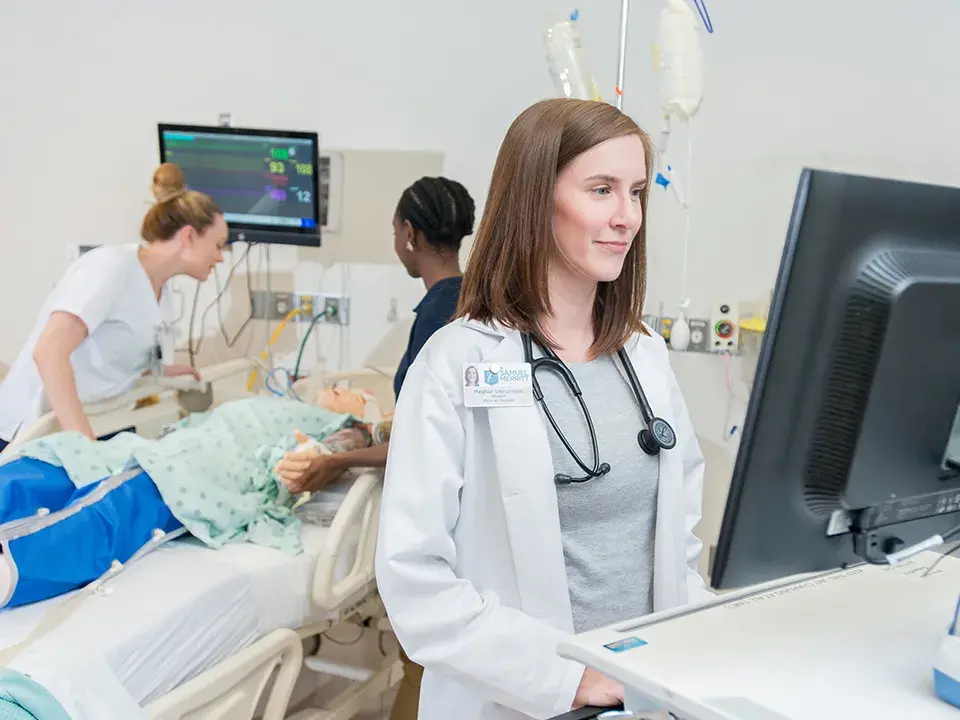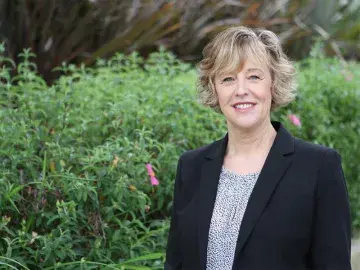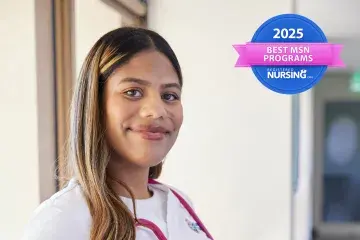Expanding the Reach of Interprofessional Education

Samuel Merritt University is deepening its commitment to interprofessional education (IPE) by spearheading academic and clinical initiatives that are reaching students throughout all five health sciences programs.
To achieve SMU’s vision of fostering an inclusive and collaborative approach to healthcare that will improve patient care, the University is pursuing ways for all students to “learn with, from, and about each other.”
Anew “passport model” will require all SMU students to gain IPE experiences before they graduate much like world travelers gain stamps from each country they visit. Students will participate in a progressive series of courses and activities that are relevant to their studies, involving more than one profession, and are designed to improve collaboration across professions with the goal of improving health outcomes.
Providing the skills to effectively practice IPE, all staff, faculty, and students are trained in TeamSTEPPS™ — or Team Strategies and Tools to Enhance Performance and Patient Safety — the national standard for strengthening teamwork and communication among healthcare professionals. SMU was one of the first healthcare universities in the nation to offer the training campus-wide.
SMU Assistant Academic Vice President Michael Negrete, a leader in the University’s IPE initiatives, said the students who master TeamSTEPPS™ will be well-suited to jump right into the healthcare workforce.
“The more they know how to work and communicate with others, the more marketable their skills,” Negrete said.“They’ll also be leaders in improving patient safety, which is the most important part of the job.”
At its core, IPE aims to transform healthcare by promoting teamwork across health professions and disciplines.
“I love what we’re doing in IPE,” said SMU President Sharon Diaz. “I think we have to better prepare people to work together and use every healthcare provider to the maximum of their education and capability. We have to become much more efficient and must spend our healthcare dollars optimally to care for people better than we do now.”
Becoming a Hotspotting Hub
Due in large part to SMU’s demonstrated commitment to IPE, the University was chosen by the Camden Coalition of Healthcare Providers last year as the West Coast hub for training students in how to practice “hotspotting,” a new model for caring for patients with complex health and social needs.
“The hotspotting program perfectly aligns with SMU’s core values of collaboration, compassion and advancing health equity,” said President Diaz.
What the Camden Coalition calls “the art of hotspotting” makes strategic use of data to locate the most frequent users of emergency departments and then applies a personalized approach to better understand and address the medical, psychological and social barriers preventing them from staying healthy.
Interprofessional teams of students from nine universities across California — including SMU, San Francisco State and UCLA — were trained over the past year to become student hotspotters so they could help connect the highest-need patients to support services and reduce their repeated hospital visits.
The professions represented by the nearly 50 participating students include medicine, nursing, physical therapy, pharmacy, podiatry, psychology, and social work.
At a wrap-up event at SMU in April, most participants agreed that the first year was challenging, but remained hopeful about the future of the program.
One of the biggest obstacles they encountered was in gaining access to patients, either because they were homeless or due to the bureaucratic barriers at hospitals.
SMU Professor Amin Azzam, MD, one of the faculty advisors, said many of the frustrations faced by the students reflected our “terribly broken healthcare system.”
Nonetheless, he said: “Being part of hotspotting reminds me of why I love my work, why I’m committed to social justice, and why I love interprofessional education.”
Putting IPE into Action
As an academic priority at SMU, IPE was on full display this spring during a series of half-day sessions held in the Health Sciences Simulation Center on the Oakland campus. SMU nursing, physician assistant, physical therapy, occupational therapy, and podiatric medicine students joined medical students and social workers from universities across the Bay Area to learn about interdisciplinary communication and patient safety.
“We’re engaged in a cultural transformation,” Dr. Azzam told the students, most of them early in their graduate educations with little clinical experience. “We’re happy to be breaking down silos.”
To accomplish that, a session in April included a surprising exercise. Everyone was asked to come up with one-word stereotypes about each other’s professions. Descriptions like “know-it-all” for physicians, “overworked” for nurses, and “athletic ”for physical therapists led to lively exchanges among the participants about the myths and truths surrounding their professions.
The centerpiece of the course was a simulated encounter with a “patient” in a skilled nursing facility who was experiencing cognitive problems. Split up into teams and equipped with background on the case, some students entered the room to develop a treatment plan and communicate with the patient and her partner, while others observed the encounter via video.
In a group debrief following the simulation, students and faculty members heard what went well and what could have been improved from the actors who played the roles of the patient and family member. Then they discussed how the interprofessional team handled delegating responsibilities and sharing knowledge with each other.
“In our program, we discuss the roles of different professions,” said Sammy Mehtar, a student in the UC Berkeley/UCSF Joint Medical Program. “Seeing it all come together is really powerful.”
What SMU students are saying about hotspotting:
“Hotspotting was intriguing to me because it allowed me the chance to understand the shortcomings of the healthcare system through the eyes of patients whose needs are not met by it. I also wanted to better understand patients that are disadvantaged in the healthcare system and how the healthcare system can be improved upon so that I can better serve my patients in the future.
The greatest lesson I learned from my patient was how much of an impact consistent personal contact can have on a patient’s outcome.”
-- Meira Prescher, DPT ’18
“As an undergraduate major in sociology, I always wanted to practice healthcare in a way that included the medical aspects as well as the social factors that patients face.”
-- Andrew Shiah, ELMNS FNP ‘19
“I wish I could have done more, but this was new for us. I feel like this program is going to be so much better every time and we’re going to make a difference in the community.”
-- Anusha Lal, ELMNS CM ‘18
This article appeared in the 2018 Report to the Community. Click here to view the entire annual report.


